New white cocat comes of age
PA profession soaring as EVMS program turns 20
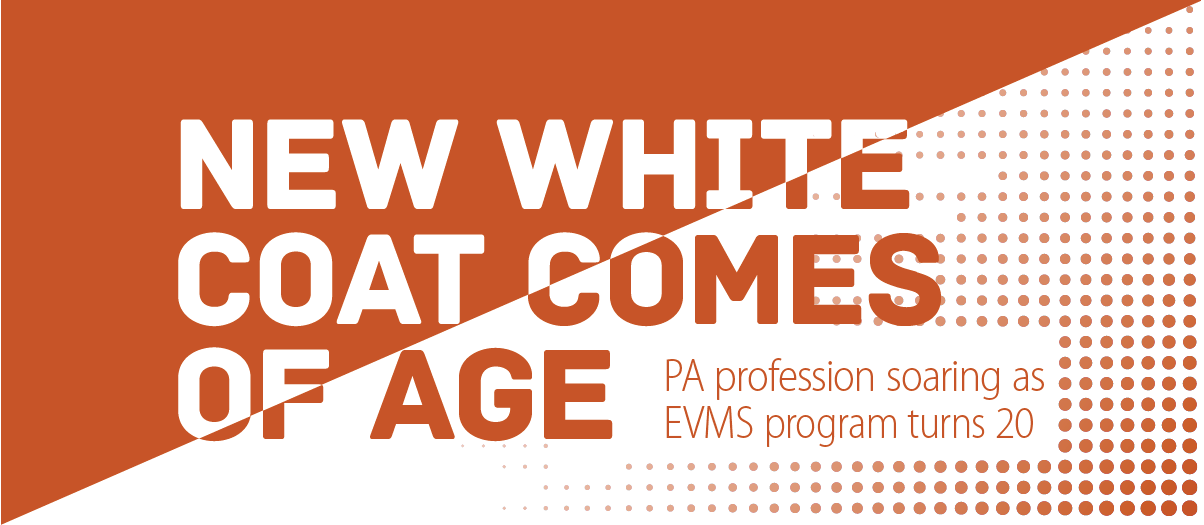
In 2006, Christian Joyner, MPA, PA-C (MPA ’06), was hired as a physician assistant by C. Stokes Kirkland, MD (MD ’81).
“Dr. Kirkland had a policy that all new patients would have to see me first,” Ms. Joyner says, “but after that, it was up to them.”
That policy didn’t sit well with Regina Lawrence — at first.
“I was very hard on Ms. Joyner,” she admits. “I wanted to either run her away or make sure she was the best. But she has ended up being an angel in my life. She is the consummate healthcare professional.”
Since its MPA program launched 20 years ago, EVMS has graduated 940 consummate healthcare professionals in the form of physician assistants.
Today, about 1,500 applicants from around the nation compete each year for 80 spots in the program.
Courtney Anderson, MPA, PA-C (MPA ’04), now an Associate Professor in the School of Health Professions, had her heart set on the EVMS program when it was only three years old. She even deferred admission to another PA program until she was accepted at EVMS.
“I really wanted a program that was affiliated with a medical school,” Ms. Anderson says. “And this region offers access to such diverse patient populations.”
Today, applicants are clamoring for acceptance for a new reason.
“I’m unaware of any PA program in the nation that has an ultrasound curriculum as robust as this one,” says Brad Boyette, MBA, MPA, PA-C (MPA ’02), Assistant Professor in the School of Health Professions.
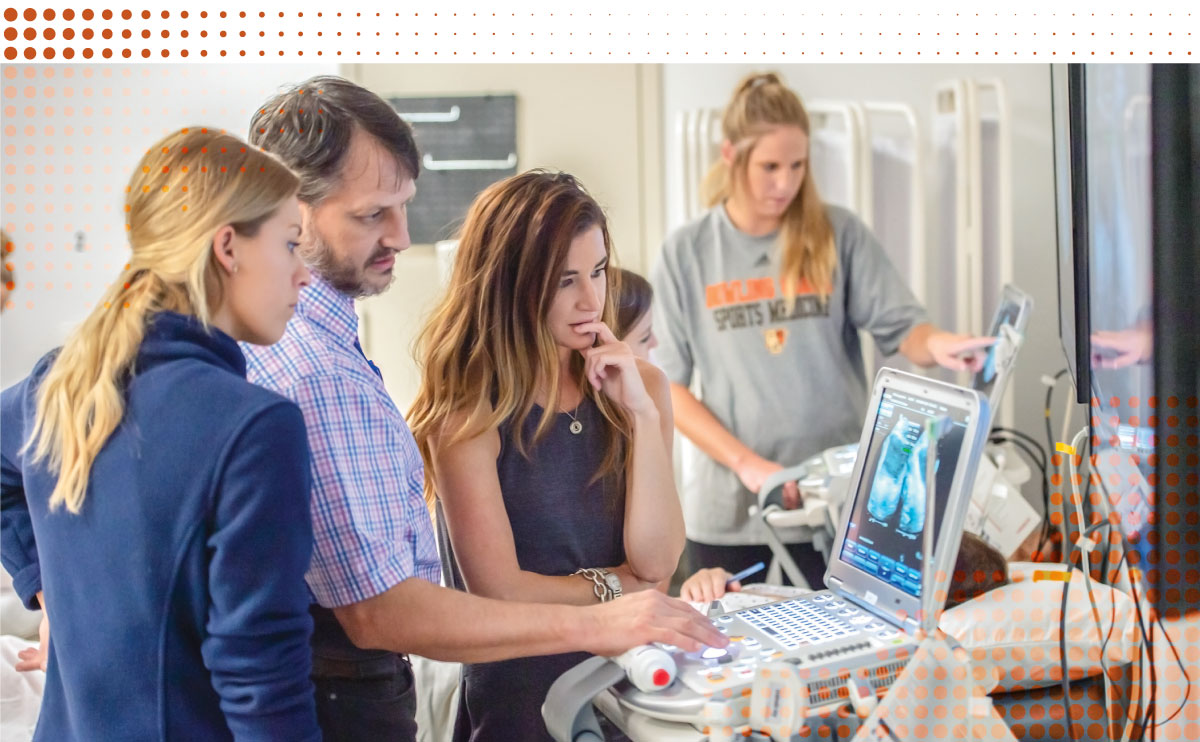
“I’m unaware of any PA program in the nation that has an ultrasound curriculum as robust as this one.”
Brad Boyette, MBA, MPA, PA-C (MPA ‘02)
The emphasis on ultrasound, Mr. Boyette says, “gives EVMS graduates a tremendous competitive advantage.”
Recent alumnus Ben Cavin, MPA (MPA ’18), discovered that first-hand.
During his time as an MPA student, Mr. Cavin was a student leader who worked alongside faculty members to expand the program’s ultrasound training. Last summer he reaped the training’s benefits during his PA fellowship in emergency medicine.
“When we first got to ultrasound as PA fellows,” he says, “I already knew what I was doing. I felt very well-prepared.”
A growing emphasis on ultrasound is only one way the PA profession is evolving, says Jonathan Sobel, DMSc, PA-C, MBA, President of the American Academy of PAs and Chair of its board.
“One of the biggest shifts we have seen recently,” Dr. Sobel says, “is in the language that describes how PAs work with physicians. Today, it’s more about ‘collaboration’ than ‘supervision,’ and state laws are continuing to reflect that.”
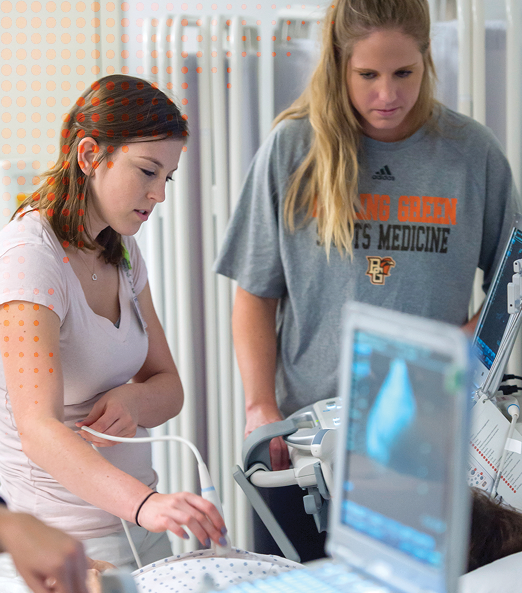
What is a pa?
Physician assistants are medical professionals who diagnose illness, develop and manage treatment plans and prescribe medications, usually under the supervision of physicians. By practicing in every medical setting and specialty, PAs improve healthcare access and quality. At EVMS, a Master of Physician Assistant degree is awarded to students who graduate from a rigorous 28-month program. Board certification offers the PA-C credential required to practice.
Federal laws are changing, too. For example, Congress recently passed the Medicare Patient Access to Hospice Act, which allows PAs to manage and provide hospice care to terminally ill Medicare patients. “This is a significant step forward for PAs and their patients,” Dr. Sobel says.
With a predicted shortage of up to 120,000 physicians by 2030, PAs are in high demand. The U.S. Bureau of Labor Statistics projects that the PA profession will grow 37 percent from 2016 to 2026. That’s one reason why almost all MPA students graduate from EVMS with jobs lined up.
Dr. Kirkland offers another reason, this one related to the EVMS program specifically. As an Assistant Professor of Family and Community Medicine at EVMS, he enables MPA students to rotate through his practice. “I do my best to stump them with something that’s not easy,” he says, “but they always get it right.”
They also get it right on the national certifying exam. MPA classes at EVMS are known for exceeding the exam’s national pass rate, with the two most recent graduating classes earning a pass rate of 100 percent. And a mock-interview program, developed 10 years ago by MPA program alumni, helps students polish their job interview skills.
“We are making our students so employable,” Ms. Anderson says. “They are really well-prepared. We hear that doctors often ask them, ‘Wow, where did you go to school?’”
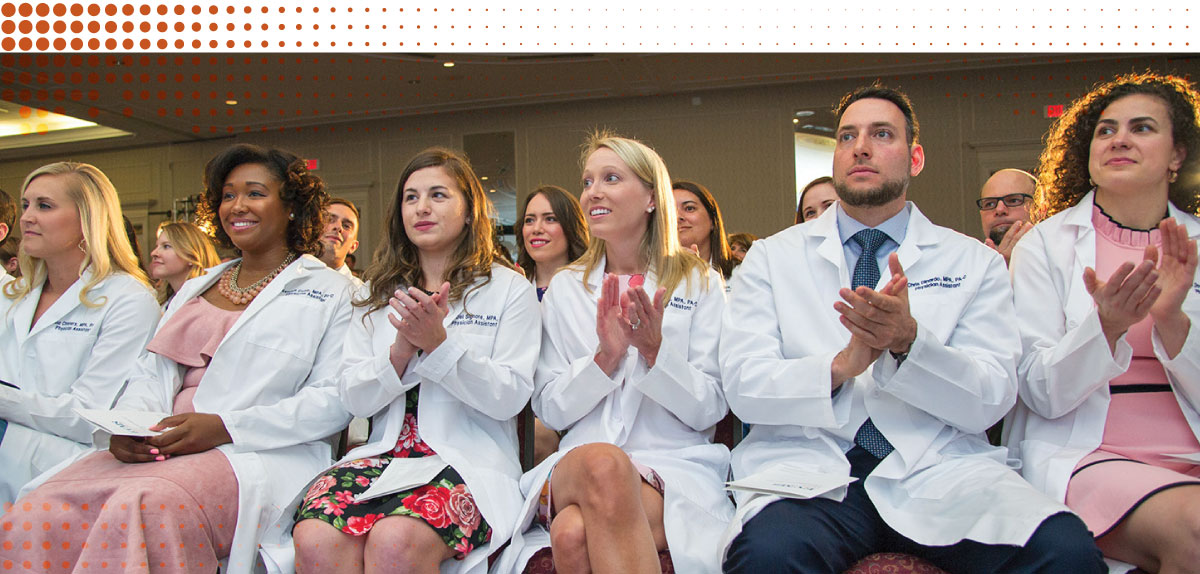
“We are making our students so employable. They are really well-prepared. We hear that doctors often ask them, ‘Wow, where did you go to school?’”
Courtney Anderson, MPA, PA-C (MPA ‘04)
An interview with the President of the American Academy of PAs
In July, Jonathan Sobel, PA-C, DMSc, MBA, was named President of the American Academy of PAs and Chair of its Board of Directors. After assuming those roles, Dr. Sobel granted one of his first in-depth interviews to EVMS Magazine.
First off, I’d like to congratulate the PA students and faculty associated with the Eastern Virginia Medical School’s PA Program. Congratulations on your first 20 years and cheers to the next 20 and beyond! Your continued success underscores the need for PAs.
The U.S. Census Bureau projects that by 2030, 24 percent of the population will be 65 or older, accounting for 86 million persons. In addition, by 2030, the U.S. may face a shortage of 42,600 to 121,300 physicians according to the 2018 projections established by the Association of American Medical Colleges. The U.S. Bureau of Labor Statistics projects that the PA profession will increase 37 percent from 2016 to 2026, significantly faster than the average for all occupations.
The demand for PAs is growing dramatically because the healthcare needs of our country continue to increase. Patients recognize that not only do PAs provide high-quality care, but they can also help fill gaps where physician shortages are taking hold. For instance, an estimated 15 percent of PAs practice in rural areas, where provider shortages are most pronounced. According to data from AAPA Salary Reports, the estimated total number of clinically practicing PAs in rural settings has been on an upward trend — increasing by more than 77 percent since 2012.
Changes in the marketplace impacting healthcare delivery have moved from a fee-for-service to a fee-for-value model. This places a greater emphasis on team-based care, where every member of the medical team plays a pivotal role in caring for a patient. With the growing number of patients coming on line with complex comorbidities and the factors outlined above, the demand for the quality care PAs deliver will only continue to increase.
It is a great time to be a PA and I believe the demand for our care is only going to increase in the future. PAs are trusted medical providers who offer high-quality medical care, increase access to healthcare, have comprehensive training and education, and are critical and valued members of the healthcare team.
Their role has changed since the profession began in the 1960s. Today, it’s common for PAs to serve as a patient’s primary healthcare provider. As our healthcare system continues to evolve, I believe this will continue. At the same time, team-based healthcare is not going away, and PAs will continue to work alongside other medical providers as they serve patients. PAs are poised to continue providing the quality care they are known for, while at the same time adapting to the remarkable advances of modern medicine.
Let me give you an example. A few years ago, Christine McAndrew, PA-C, of Children's Hospital of Philadelphia, served as Hand Transplantation Coordinator for a historic surgery for now 9-year-old Zion, who lost his hand due to a sepsis infection when he was just two. This surgery, the first pediatric bilateral hand transplant ever performed in the world, was performed by a team of 40 medical professionals. It’s thrilling to know that a PA was part of such a life-changing medical procedure.
One of the biggest shifts we have seen recently is the language that describes how PAs work with physicians. Today, it’s more about “collaboration” than “supervision” and state laws are continuing to reflect that. But that’s not the only way states are modernizing PA practice. Already in 2018, more than half of all states have made some improvement to PA practice. Connecticut eliminated the ratio restriction on the number of PAs with whom a physician may practice. New Mexico and Wisconsin removed barriers to PAs prescribing buprenorphine. Learn more about these and additional progress made at the state level at aapa.org.
As we continue to advocate for more modernized practice laws, we also may start to see a trend in states removing the requirement for PAs to have an agreement with a specific physician in order to practice. It’s better for everyone, including the patients, when the decisions about how PAs work with physicians are made at the practice level. That’s why AAPA is advocating for Optimal Team Practice, which calls for laws and regulations that will make a profound difference in expanding access to care.
We’re also seeing progress at the federal level. In 2016, PAs and NPs were granted the ability to obtain waivers to prescribe buprenorphine for treatment of opioid use disorder as part of the Comprehensive Addiction and Recovery Act. Just this past June, the U.S. House of Representatives passed legislation that will permanently extend this waiver program. AAPA will continue to advocate on behalf of the profession since this legislation still needs to pass the Senate and be signed by the President to become law.
Earlier this year, Congress passed the Medicare Patient Access to Hospice Act, which will allow PAs to manage and provide hospice care to terminally ill Medicare patients. This is a significant step forward for PAs and their patients — especially since The Centers for Medicare and Medicaid Services estimates there will be 81 million beneficiaries in 2030.
It’s definitely an exciting time to be a PA. As the PA role is becoming even more integral in our healthcare system, the profession is growing by leaps and bounds.
In fact, entities such as U.S. News and World Report, Forbes and even the Bureau of Labor Statistics have, in various “lists,” ranked being a PA as one of the best jobs, one of the most promising jobs, one of the fastest-growing jobs, and one of the highest-paying jobs. One thing PAs and all medical providers have in common is that we’re all passionate about giving back to our patients and our communities. We care about improving and even transforming healthcare — and are more willing to sacrifice our own needs to make sure our patients receive the care they deserve.
This is so exciting for students and for the profession. The increased use of point-of-care ultrasound allows PAs to better care for patients, so this is a great advantage EVMS is providing its PA students. And yes, this is a trend in PA programs, as it is in medical schools. There is a saying that “ultrasound is the new stethoscope.” Interestingly, at AAPA’s 2018 Conference, we launched the inaugural “Yes, I Scan” event, which provided hands-on scan time to students and educators across multiple point-of-care ultrasound applications through workshops and competitions. We worked closely with our Special Interest Group, the Society of Point of Care Ultrasound, which is working with educators to bring this technology into their curriculums.
I would like to mention how important it is for PAs and PA students to volunteer to ensure we are amplifying the PA voice. We all must be advocates for our great profession, whether that advocacy takes place within your PA program or in the future with your employer, your state legislator, of your senator or representative at the federal level. We have to be responsible for our own destiny as a profession.
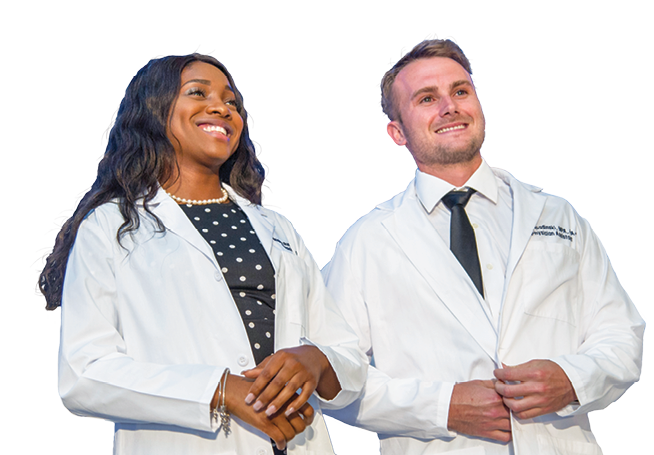
The U.S. Bureau of Labor Statistics projects that the PA profession will grow
37 percent
from 2016 to 2026.